Books Are The Perfect Tool for American Propaganda
I’m elbow-deep into working on a new manuscript, and it’s a project that I’ve alluded to several times over the last few years. It’s one I’ve squeezed into small breaks where I can, and now that several big freelance projects I’ve been working on have wrapped up, I’ve been able to devote a few extra hours to working on it every weekend.
At times, there hasn’t been much writing and it has felt like my progress has been so dang slow. But last weekend while working on a third chapter, I realized I had upwards of five pages of references already. Sometimes the work isn’t in putting words on the page. It’s in reading them elsewhere and thinking about them before continuing to create something of my own.
One of the topics I’ve been diving into is comics history and in particular, the history of comics censorship. This is something I’ve written about quite a bit, but this weekend I stumbled upon something I hadn’t known or thought much about before. Go with me here, as this piece isn’t specifically about comics censorship. It is instead about the US government’s efforts to use books as tools for propaganda during the bloodiest modern war.
In the early years before and during World War II, Americans were pretty attuned to the role and purpose of propaganda. This was thanks in part to being not that far removed from World War I and remembering how such materials directly or indirectly influenced their thinking and behavior. In the 1930s and 1940s, Americans were also seeing in real time how propaganda played a role in the rise of fascism across the world thanks to more means and methods of news and communication.
Politicians thus had a problem.
In order to push a pro-American agenda, the government had to get a bit more clever. They did this through numerous avenues, many originating with the Office of War Information.
One such agency was the War Writers Board (WWB). The WWB connected writers with government agencies looking for talent. Though touted as an independent agency, most of the funding for the WWB–upwards of 85%–came through the government. While those involved in the WWB could act independently, the explicit goals were to produce materials that would help the US win the war both overseas and in the public opinion. There was not going to be anything rogue here. The WWB would create propaganda that wouldn’t look or feel like propaganda.
Driving home the message of American freedom was key, as was cultivating patriotism and recognition of a common enemy. At first, the enemies were Nazism and rising fascism, and fairly so. But as time went on, broader strokes in some of the WWB output would simply equate all German (and Japanese and Italian) people as the violent and inhumane enemy, rather than the political ideologies taking hold in those countries.*
In some instances, WWB creators went so far as to suggest that America itself was a bastion of inclusivity and racial harmony. This was despite all the evidence to the contrary, but the purpose was to unite against the enemies abroad by suggesting things on the home front were the universal ideal.
There were numerous different committees within the WWB. These included juvenile writing, libraries, posters, scripts and shows for overseas military, and more. WWB creatives oversaw things like patriotic writing contests with prizes that included war bonds–one of the real first thrusts for development of the WWB all together.
Also among those WWB committees was the May 10–Book Burning Committee. Its purpose was to continue to hammer home to the American people that Nazis were book burners. This was explicitly tied into one of President Franklin D. Roosevelt’s wartime goals of ensuring Americans appreciated and upheld their Freedoms as what sets them apart from the enemy.
The May 10–Book Burning Committee compiled and distributed lists of books banned and burned in Germany. They staged commemorative book burnings to drive home the point that the Nazis were bad, of course, but even more, they did it to remind Americans they were good since they had the fundamental freedoms to read books as they wished.
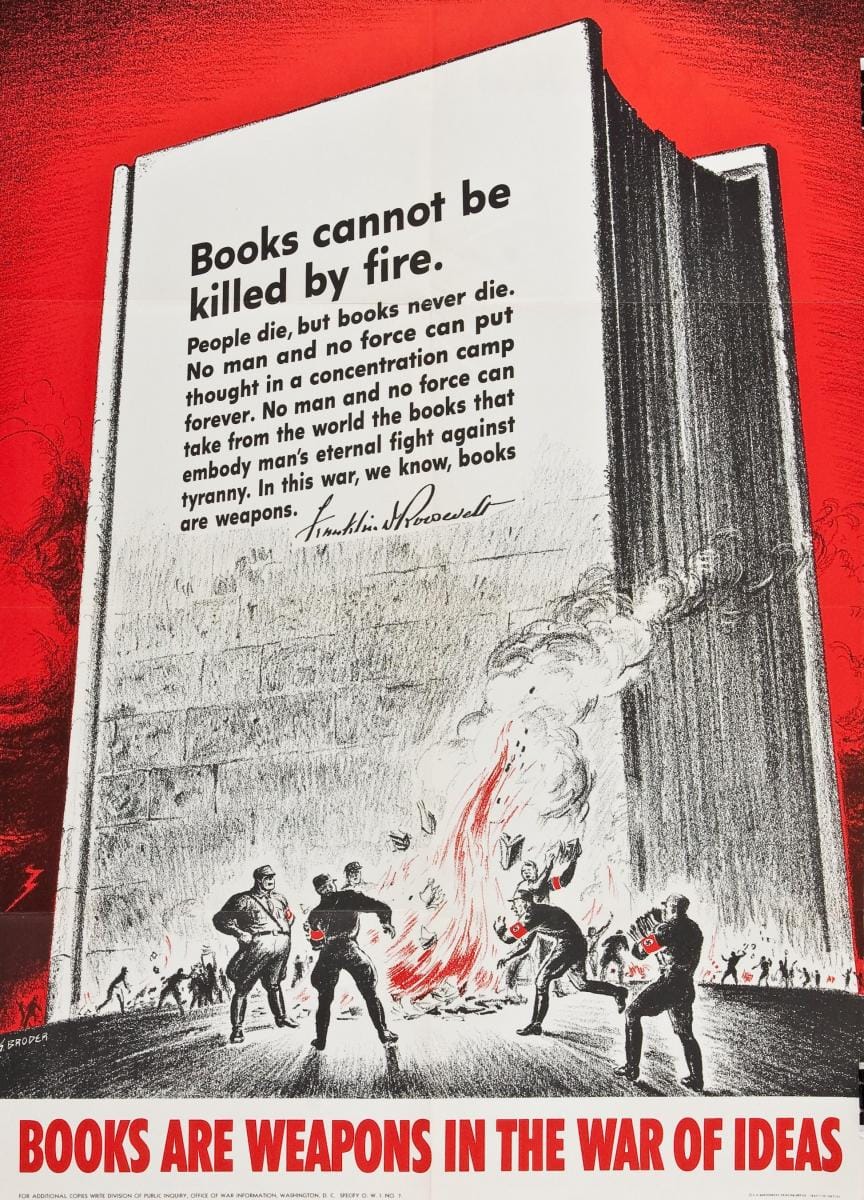
Created by S. Broder, this poster is based on a letter that the President sent to the American Booksellers Association in 1942, when he also announced that April 17 would be celebrated as “Victory Book Day.”
“Victory Book Day” intended to encourage people to donate books toward the war effort. It was incredibly successful, and it not only reaffirmed the power the government saw in utilizing books as tools of propaganda but also set up plenty of opportunities for contrasting an American pro-book culture with the Nazi book burnings.
Broder’s imagery paired with FDR’s words is nothing short of powerful or effective messaging.
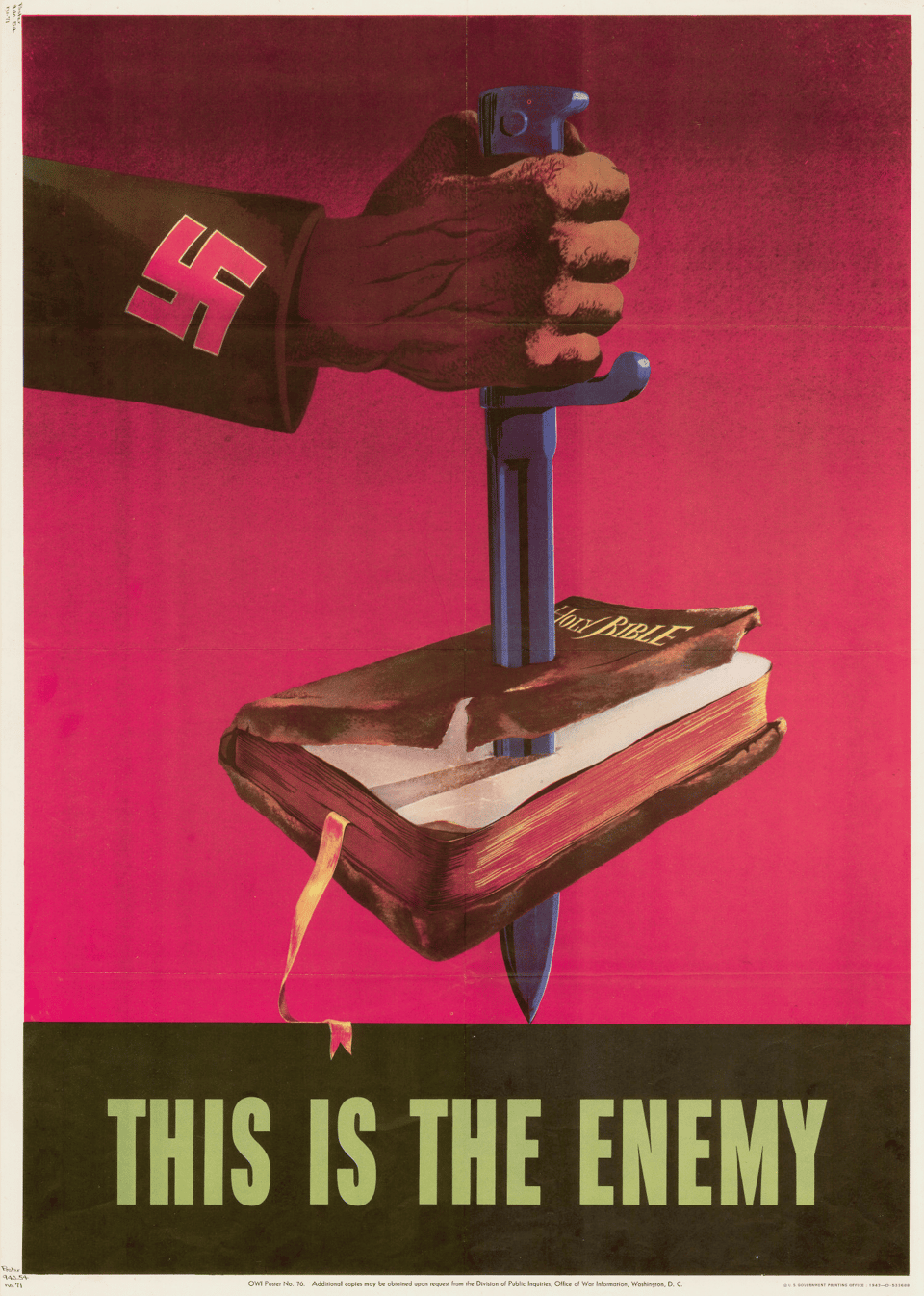
In 1943, the Office of War Information produced this chilling poster. There’s no question of either the message nor the intent here–Nazis were not only hellbent on destroying books but they were hellbent on destroying the religious beliefs held by so many Americans.
America may not be a Christian nation, but the symbolic nature of the Bible here makes a strong argument otherwise.
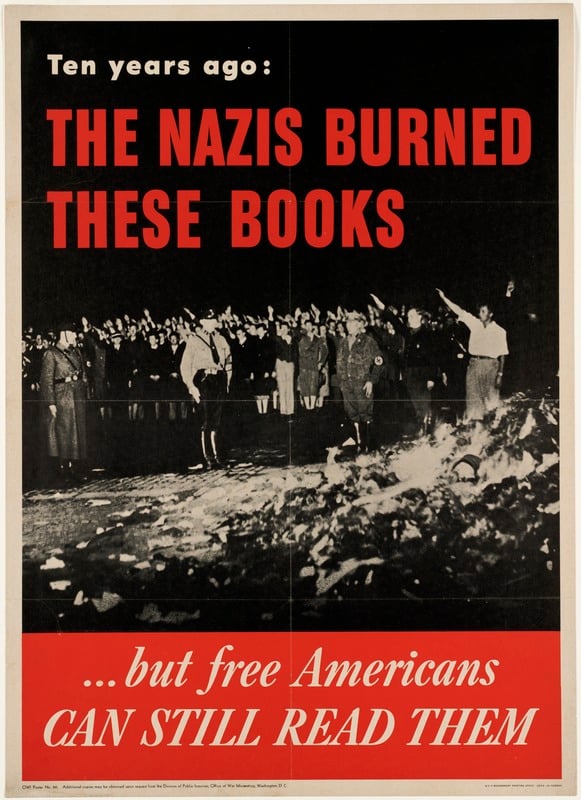
The Office of War Information and its WWB committee were certainly eager to capitalize, too, on the 10 year anniversary of the Nazi book burnings.
FREE AMERICANS don’t have to worry about being subject to anything like what’s happened in Germany. FREE AMERICANS can still read the books shared on accompanying lists compiled and promoted by the WWB and others.**
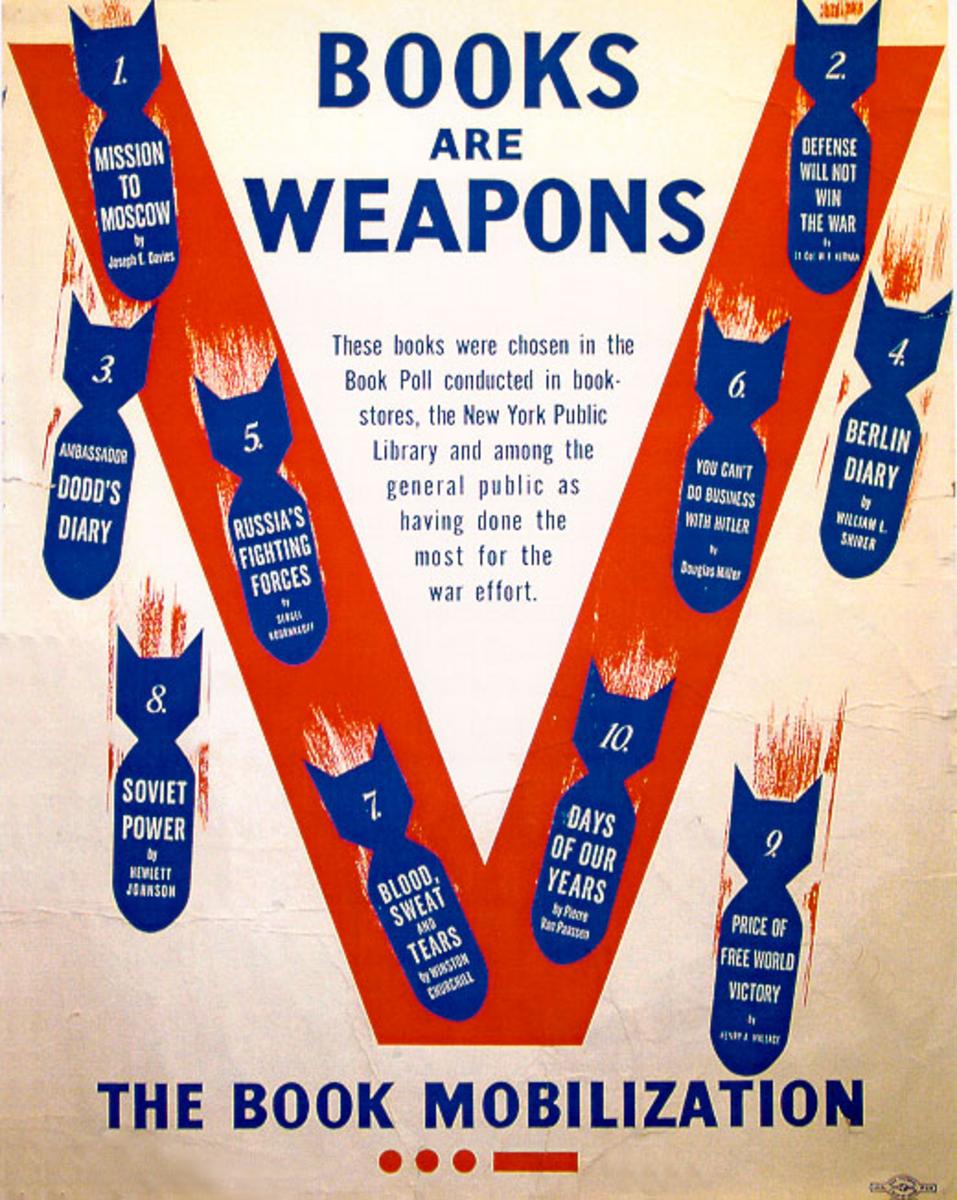
Here’s another example of the kind of propaganda put out by the Office of War Information, including its WWB.Books, which have always been romanticized as physical objects and which were now becoming more affordable and accessible to the average middle class American, were an ideal symbol for Freedom. Books were–and still are!–a perfect tool to spread a specific type of message. Books can win the war on ignorance as much as they can become the representation for how a government wants you to think and act.
It wasn’t just posters, though, that saw such government-influenced propaganda. It was also written and audio work. Anything creative that Americans enjoyed in their free time was prime for this form of subtle propaganda.
Stephen Vincent Benét penned one of the most memorable works under the WWB. “They Burned The Books” was a radio program on CBS and ran as part of a series of shows intended to garner support for the war efforts. Benét’s show hammered home that the war began with book burnings under Hitler’s orders. It was, as all of the efforts by the WWB, informed by realities but depicted with sensation. You can listen to the broadcast here.
As noted earlier, the WWB wasn’t the only organization utilizing books and reading to persuade Americans what they should believe about the ongoing war. The Office of War Information also created the Council on Books in Wartime (COBIW), a volunteer organization of booksellers, publishers, authors, and librarians; it, like the WWB, was “independent” of the government, but it did not stray from pro-patriotism messaging for the American people.
One artifact from the COBIW came in the form of a syndicated column by Eleanor Roosevelt. “My Day,” published May 11, 1943, included some familiar lines about book burning and its ties to freedom. Those weren’t words Roosevelt penned herself. They came at the urging of James Van Toor, who served as the Executive Director of the COBIW.
Other organizations were involved in the war efforts as well, including the American Library Association (ALA), PEN America, and others. The ALA, for example, worked to collect books that could be sent overseas to service members through the Victory Book Campaign.
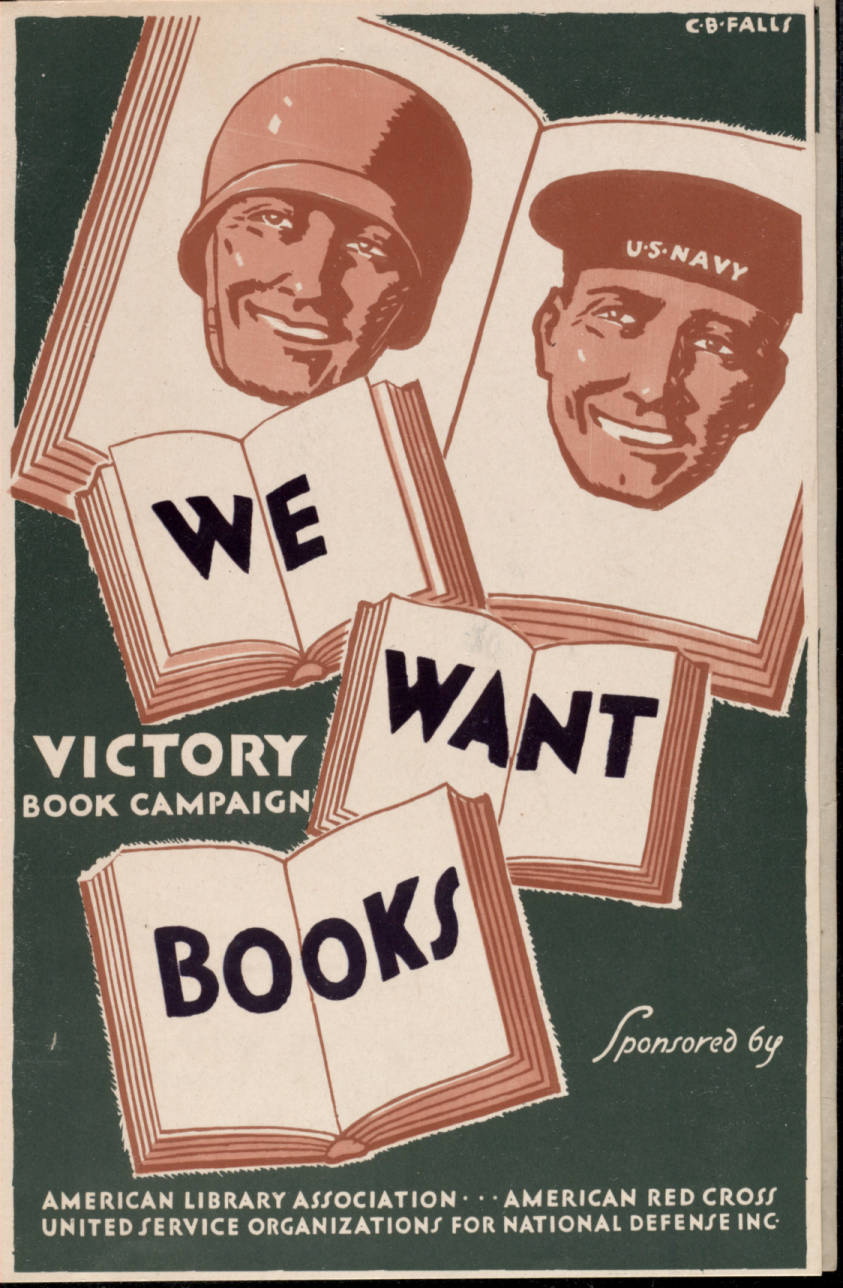
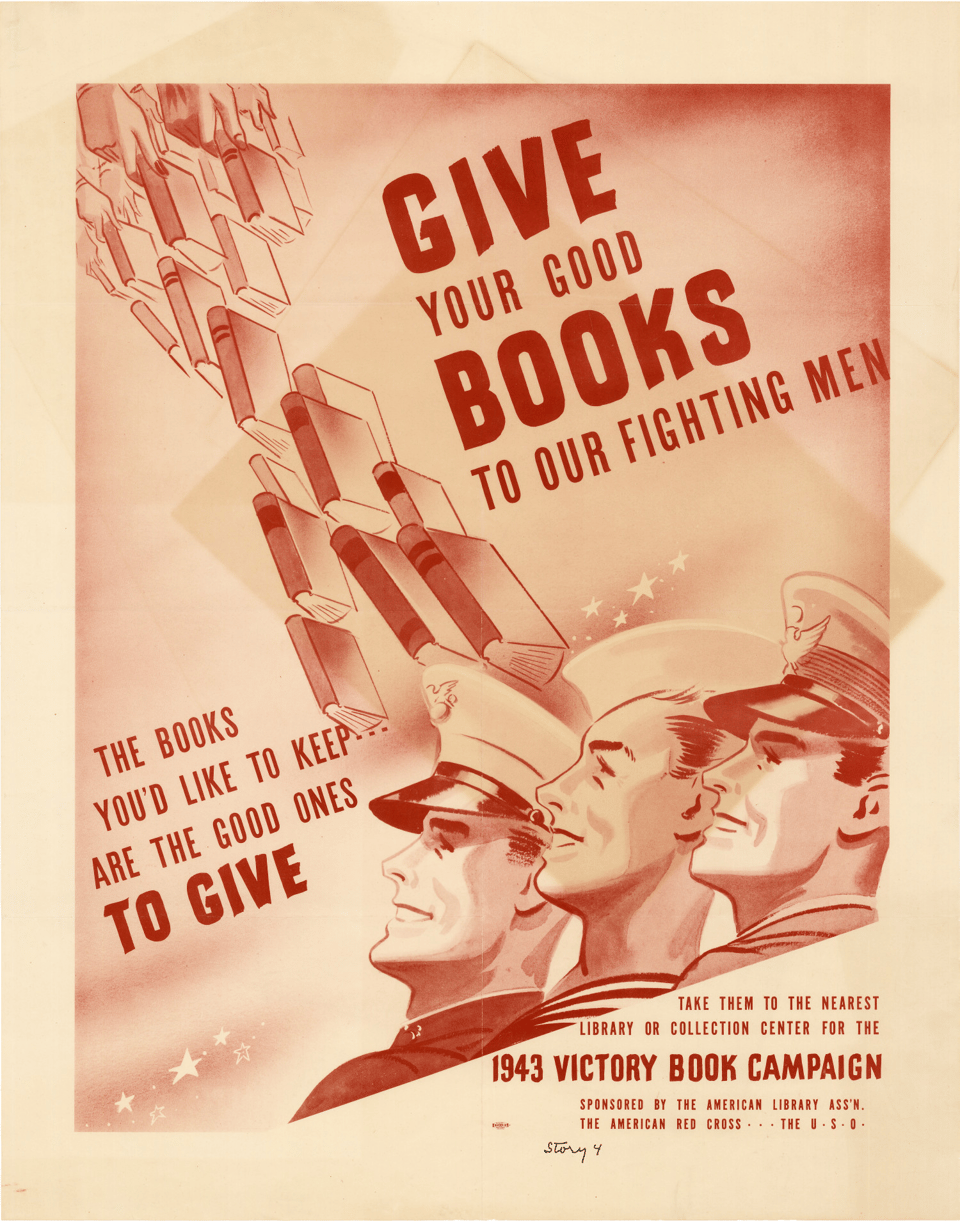
Yes indeed, the ALA, as well as organizations like the New York Public Library, were engaged in government-encouraged propaganda. For institutions which pride themselves on neutrality today, libraries did not take that stance during other points in history.
In isolation, each of these anti-book ban campaigns is benign, especially because none of what’s shared is factually incorrect. Nazis did burn books and such tactics were representative of a dangerous fascist regime on the rise. No one could argue otherwise.
But the moment you look at them all together, the propaganda is startlingly clear. This wasn’t about decrying book banning because banning books is bad. It wasn’t about the dangers of destroying literature as step one in the process of systematically disappearing the people represented by and through that literature. These efforts were about manufacturing a sense of American idealism, a story of American exceptionalism, and a very good reason to continue engaging in a grueling, bloody battle.
The pro-America rhetoric and propaganda impressed upon citizens focused on the American freedom to read and the freedom to access a vast array of information. That was a crucial difference between us and the enemy. The United States didn’t dictate what people could or could not read! There weren’t mass book bannings in the United States (even though there were several efforts and there would be dozens of coordinated comics burnings throughout the country in fewer than 5 years’ time)! There were nationwide efforts to collect books, even, to ensure the good people fighting in the war would be able to read in their free time!
While today’s pro-American propaganda wouldn’t disagree that books are weapons, contemporary propaganda pushed by right-wing politicians, news heads, and influencers has flipped the switch. It’s focused internally at Americans, with the same intended targets and outcomes of those very Nazi book burnings: eradication of anything that doesn’t fall within the narrow boundaries of white, straight, male, able-bodied, and Christian. Accessing books that offer anything else is a prescription for the so-called “woke mind virus” to do irreparable damage.***
Today’s propaganda also relies on mis- and dis- information for effectiveness. Sensationalization and dramatization in the era of mis- and dis- information emerges on the part of the consumer reacting to the material, helping keep such dangerous information at the top of algorithmic feeds. The propaganda perpetrated during World War II? It was based entirely in reality, so the facts themselves had to be sensationalized and dramatized through context. Yes, Nazis were burning books. That’s fact. WWB and other propaganda agencies sensationalized the facts by offering an alternate reality in America via acts deemed patriotic.
The steps made by FDR, the WWB, and others to develop pro-American sentiment during the war are used today to turn American citizens against one another in a war for whose “freedoms” are the ones to uphold. The seeds of mis- and dis- information, fueled by algorithms that thrive on reaction, have made such propaganda nearly impossible to avoid and exceedingly difficult to explain to the average person. But the same sensationalism seen in WWII hasn’t disappeared. It’s just meant to fuel fears about the enemy living next door, rather than halfway across the globe.
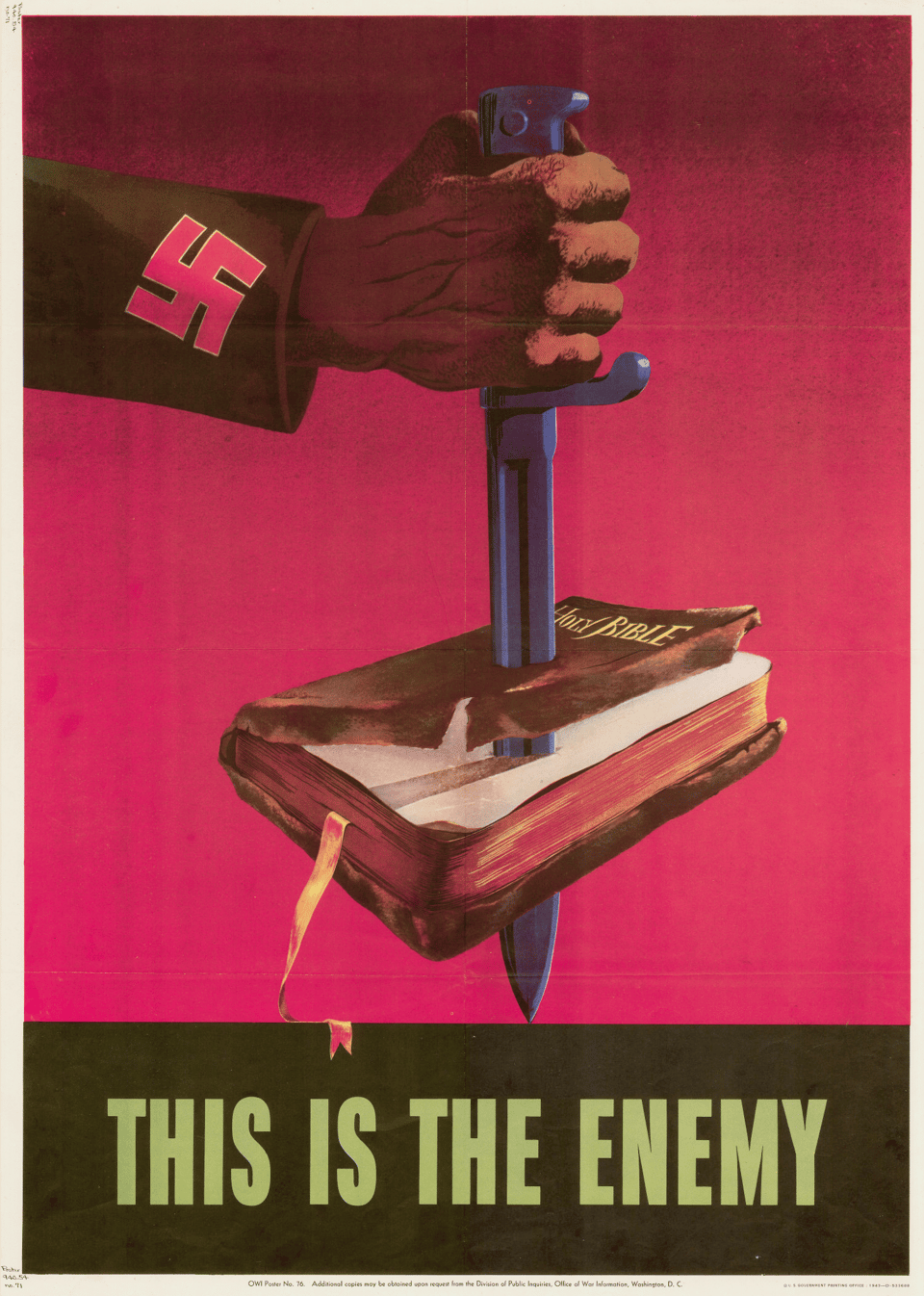
This World War II poster could easily be rerun today through right-wing media and social media to garner support for their own brand of book banning–err, book curation–with powerful effect. Even if that effect counters its original intent.
And indeed, in continuing to take more pages from history and give them a new spin, our current administration has found itself a prime opportunity to garner patriotism through a campaign of lies and false promises: public libraries and museums.
Books have always been weapons. They can and do combat hate. They can and do combat ignorance.
But books have also always the perfect tool of weaponization. Where and how they’ve been deployed as such has depended on who has power; who seeks power; and our social, cultural, and political contexts.
Notes
There’s a meatier piece here about fetishizing books as objects and how that ties into everything above, but it’s not something I can quite get to gel. I’ve been thinking about this a lot as more and more folks are (rightly!) becoming involved and enraged at ongoing book censorship in the US.
I’ve never been subject to more images of Nazi book burnings in my mentions and comments over the last half decade than I have recently. It’s an easy one to turn to–again, for really valid reasons. But it’s never sat with me as appropriate for right now in this moment, especially because Americans have burned plenty of their own books and comics and heralded it as doing good work. Perhaps it’s because we are so obsessed with fetishizing the book-as-object rather than acknowledging that the issue isn’t the book-as-object but who and what that book represents.
That would require talking about topics too many Americans find too taboo or won’t admit to themselves they’re actually prejudiced towards.
*I mentioned this research trail came about through comics history. If you want an example of how entire countries full of people became “the enemy,” look no further than the WWB’s Spring 1945 issue of All-Star Comics, titled “This Is Our Enemy.”
**In too many ways, the language of this poster reads similarly to the beliefs shared by Americans today who think that there are “good” “blue” states and “bad” “red” states when it comes to book censorship and library attacks. If you are smart enough to live in an anti-book ban state, then you never have to worry about IT happening here, right? Ignore that “good” “blue” “anti-book ban” states like Minnesota and California are dealing with book bans right now because laws are meaningless if not enforced.
***The reference here was too good to resist. If you didn’t pick up on it, no shame. It’s the title of a book so many from the right claim is banned and censored by public libraries across the US.
+Not a footnote, but I have not yet picked up the book When Books Went to War: The Stories That Helped Us Win World War II by Molly Guptill Manning because reading anything remotely related to what I’m writing (beyond research purposes) doesn’t work for me. But it looks fantastic, especially if anything related to books, propaganda, and World War II interest you.